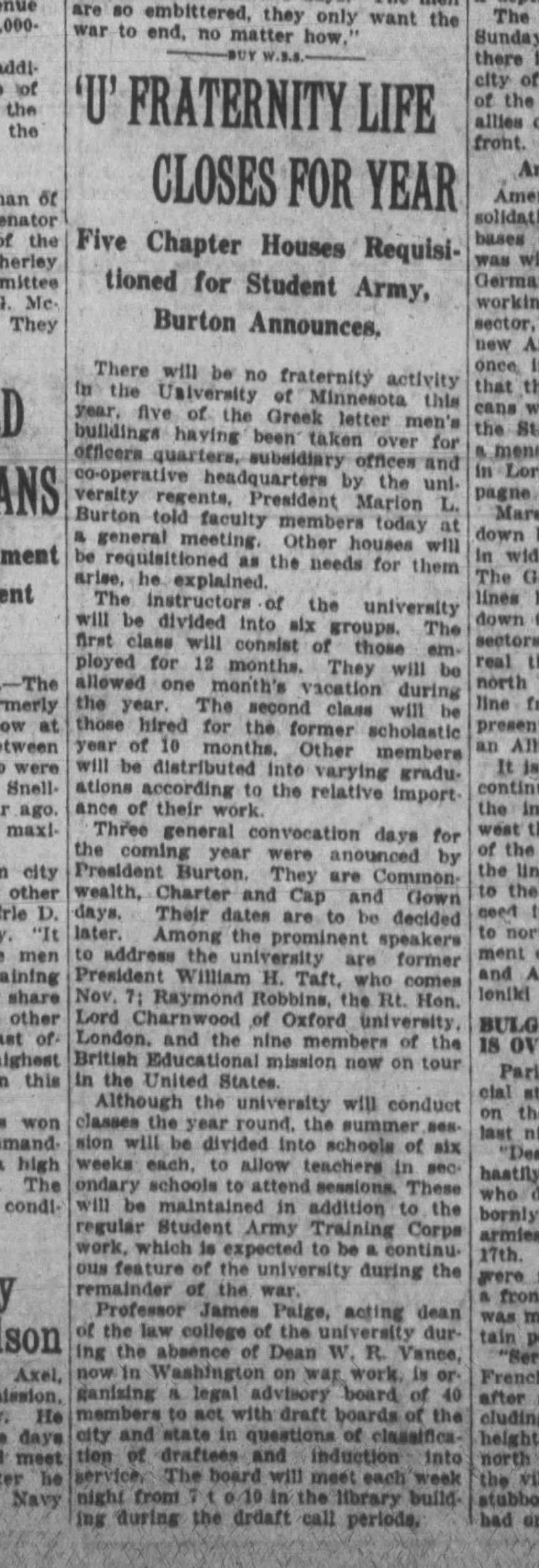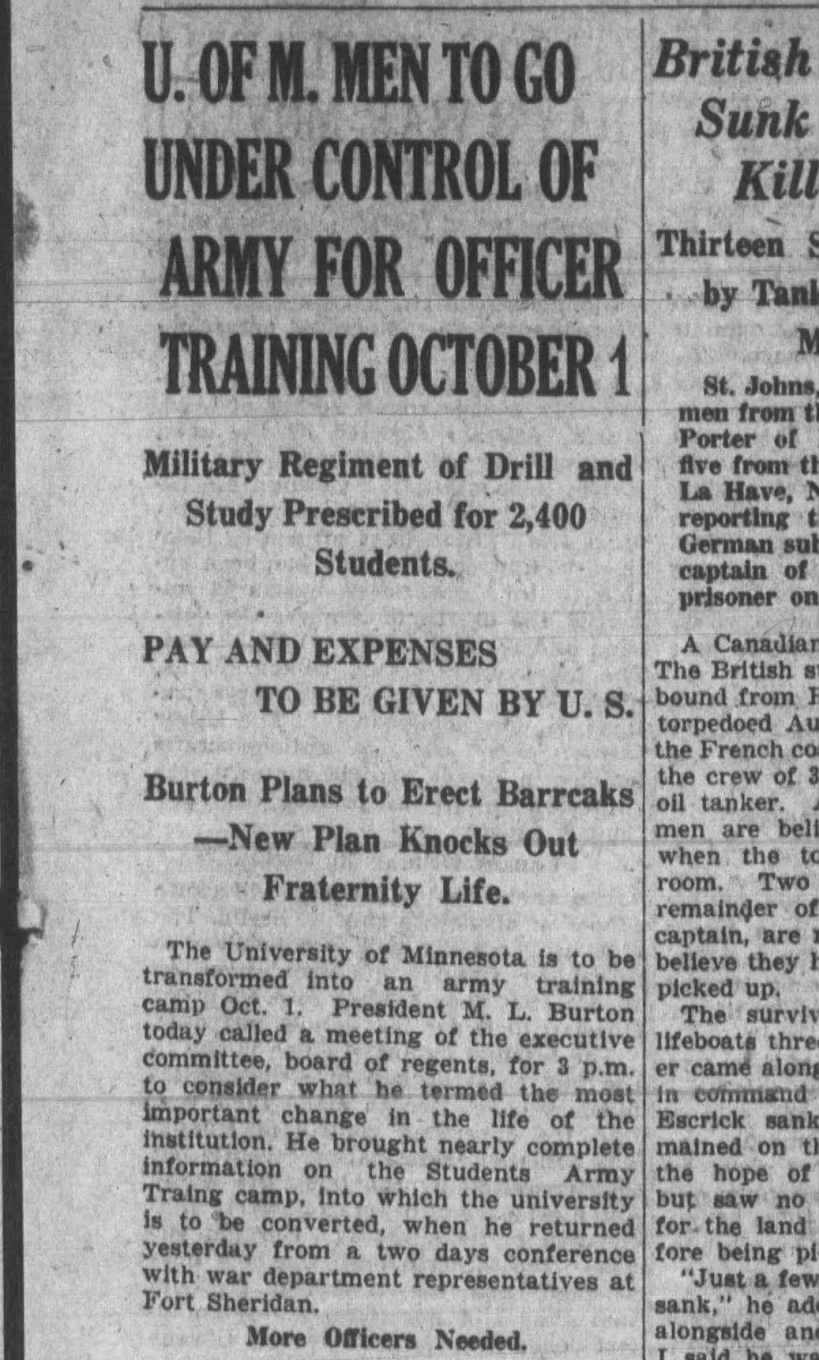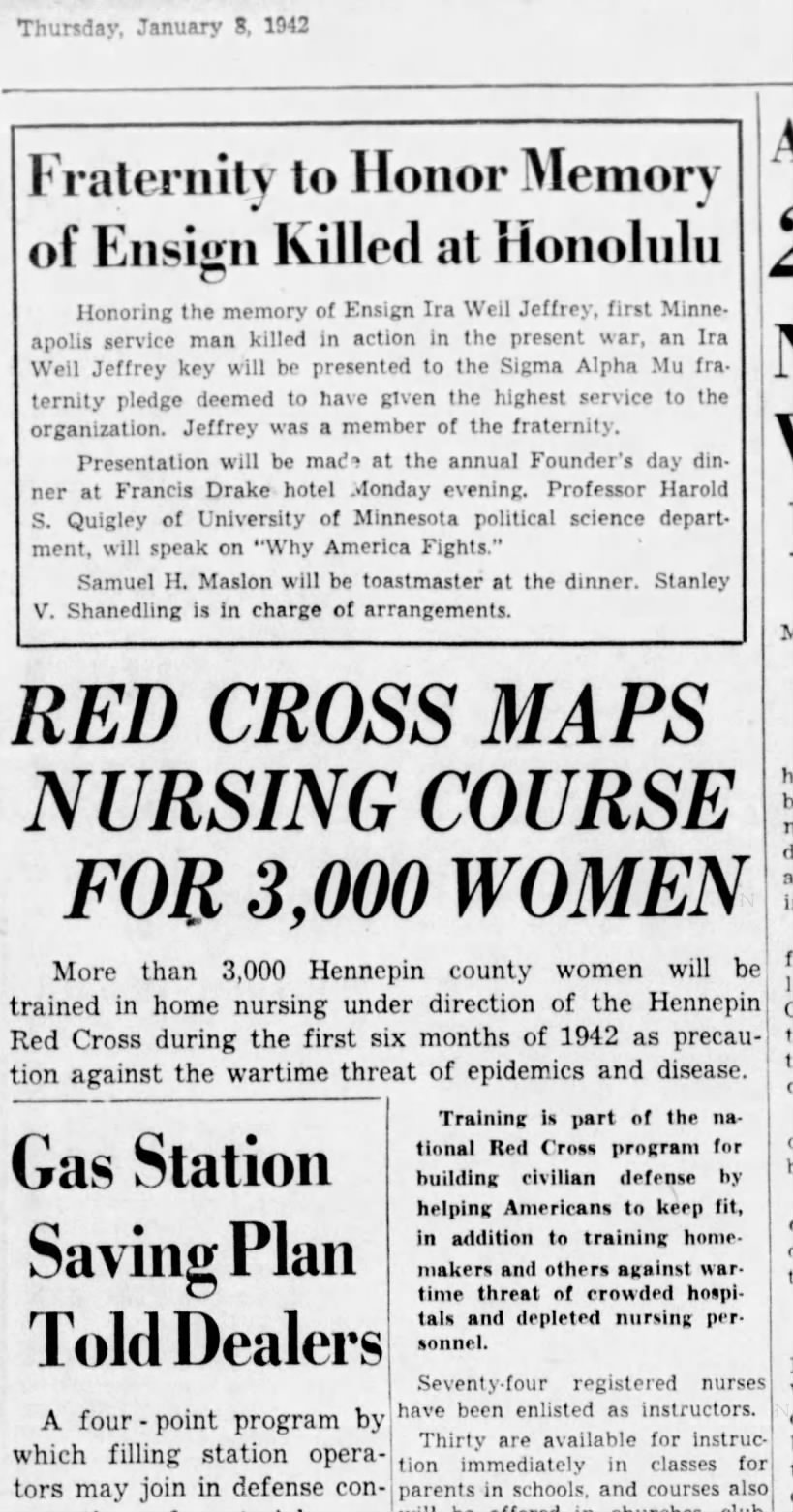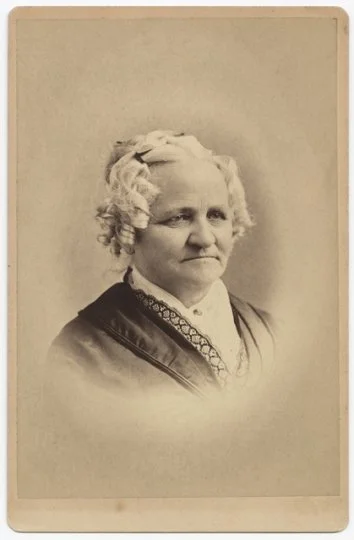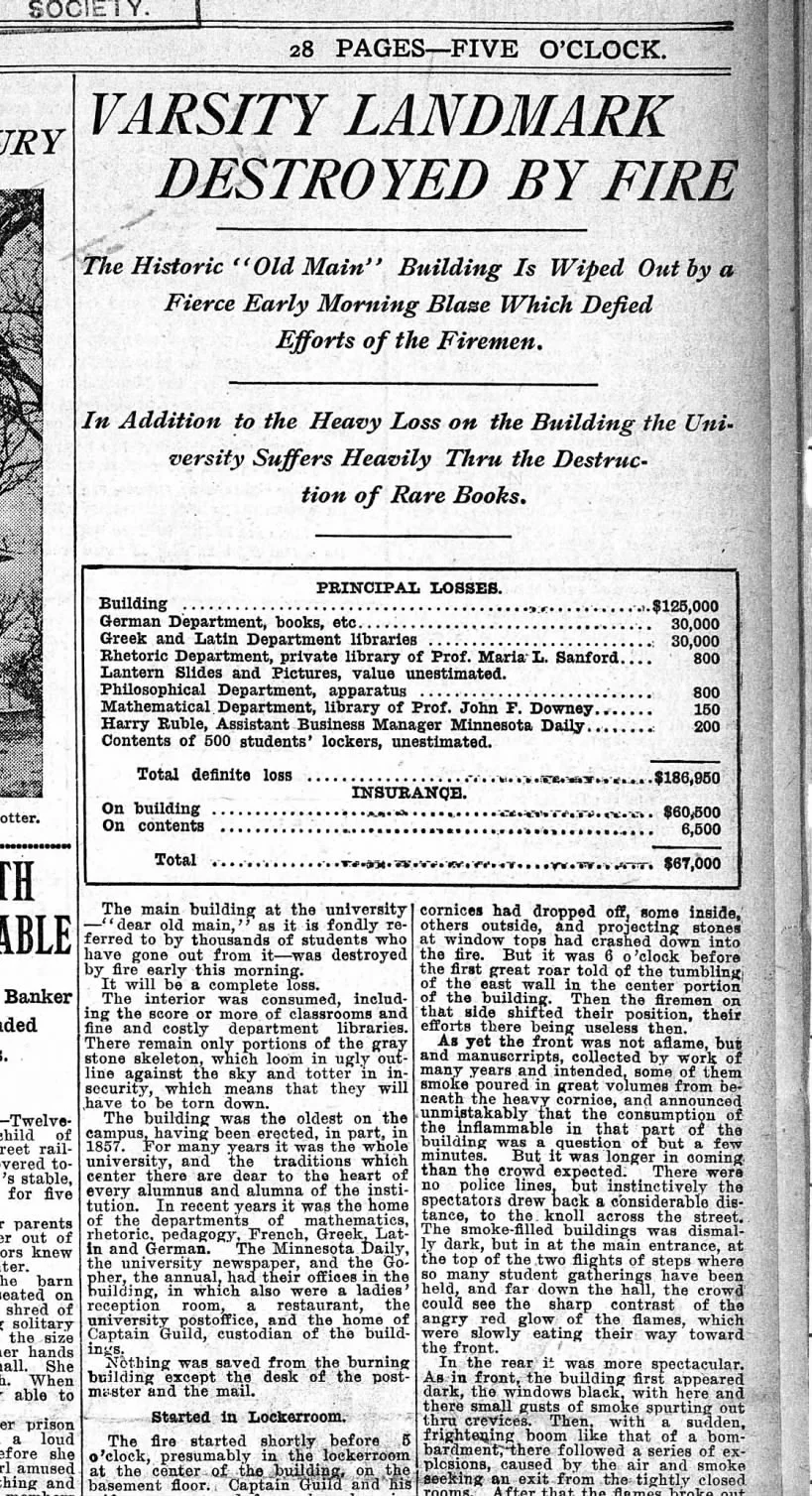Minnesota Fraternities at War
Fraternities and Sororities are stereotypically known for their raging parties, but sometimes real life in the Greek houses at the University of Minnesota was a lot more serious.
The first fraternity house at the University of Minnesota was built in 1883 for Chi Psi and eleven more houses quickly followed before America’s young men were faced with World War I. In 1918, the University shut down all fraternity activity and the houses were taken over as barracks for the Student Army Training Corps. Over 3500 men lived in the houses, the Student Union became their mess hall (cafeteria) and the campus functioned as a military training facility.
After the war and the return of university life, student housing was at a premium since the dormitories were limited. More Greek houses were built to fill the need. This building boom in the roaring twenties was a high point for Greek life that was quickly followed by the lows of the Depression and World War II. Again focused on the war effort, 15 houses were taken over by the Navy. As all of the college-aged young men were drafted into the war, some houses closed completely.
The 50s brought more upheaval to fraternity row as soldiers returning from war were unwilling to go back to the status quo. Snobbish exclusivity was out and racial equality and inclusion were in. By 1962, Minnesota had succeeded in dropping any membership clauses that excluded students by race or religion.
Today, over twenty of the remaining houses make up a Historic District - each a testament to the loyalty and support of their past members who have seen them through the hard times - and yes, let loose a little (or a lot) during the good times.












